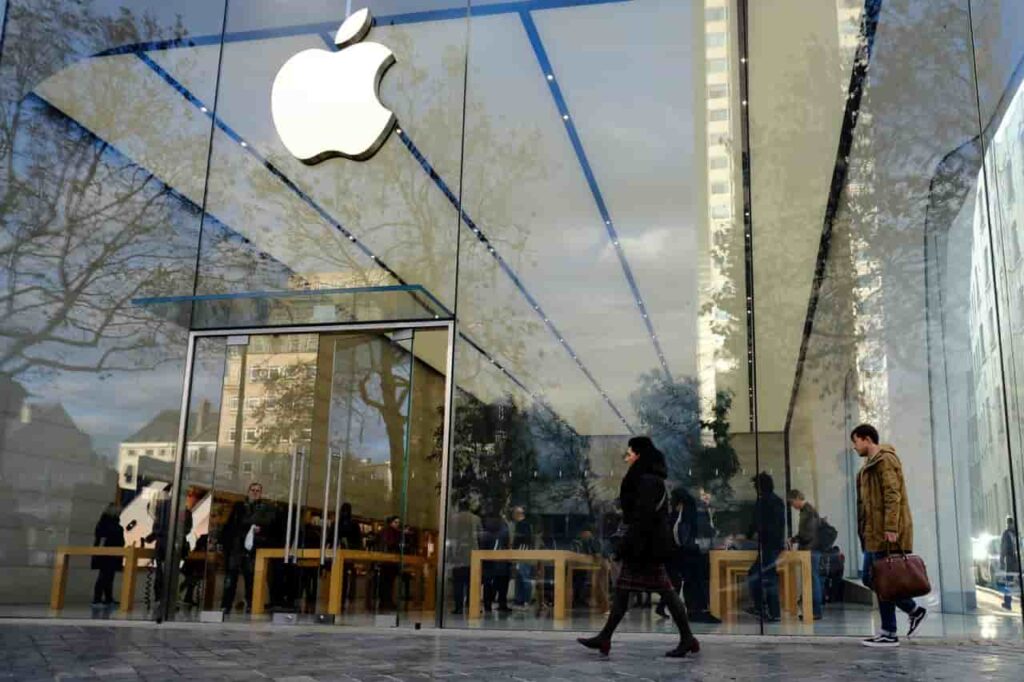Apple Inc. (NASDAQ: AAPL), one of the world’s most influential tech giants, has been the subject of a series of revised price targets from leading analysts, reflecting a tempered optimism about its future trajectory.
With Apple’s stock currently trading at $227.49, up 2.1% today and 3.10% over the past five days, the company faces a mixed market outlook as it lags slightly behind the S&P 500 Index, which is near a new high.

This follows a broader tech market shift, as Nvidia (NASDAQ: NVDA) recently overtook Apple as the world’s most valuable company by market capitalization, reaching $3.65 trillion against Apple’s $3.44 trillion on Thursday.
UBS maintains “Neutral” Outlook at $236 target
UBS, represented by analyst David Vogt, reiterated a “Neutral” rating for Apple in a research note published on November 7.
Vogt maintained a target price of $236, reflecting UBS’s cautious stance on Apple’s potential to deliver significant upside in the near term. The $236 price target places Apple near its current resistance zone, which ranges from $234.82 to $236.49, indicating potential resistance as the stock moves higher.
Vogt’s analysis suggests that while Apple remains a robust player, the stock’s growth may be constrained by existing market conditions and competitive pressures in the tech sector.
Loop Capital lowers AAPL price target
Loop Capital’s Ananda Baruah took a slightly different approach, lowering the firm’s price target on Apple from $300 to $275 but maintaining a “Buy” rating.
The updated target is based on a 32x price-to-earnings (P/E) multiple of Apple’s projected $8.57 EPS for fiscal year 2026. Baruah’s adjustment signals a recalibration of expectations, acknowledging Apple’s continued strength while recognizing potential headwinds that could limit its growth.
Despite the lowered target, the “Buy” rating underscores Loop Capital’s belief in Apple’s long-term resilience, even as it navigates an increasingly competitive landscape.
JPMorgan sticks to $265 target with “Buy” rating
JPMorgan’s Samik Chatterjee reaffirmed his “Buy” rating on Apple, holding steady with a $265 price target.
Chatterjee has confidence in Apple’s ability to overcome short-term market volatility, viewing the company as a stable investment with moderate growth potential. At $265, JPMorgan’s target implies a more optimistic outlook than UBS but remains conservative compared to Loop Capital’s $275.
AAPL technical analysis
Over the past month, Apple’s stock has fluctuated within a wide trading range of $219.71 to $237.49, positioning it in the middle of this range with resistance looming above. The stock’s current support zone spans from $221.69 to $227.31, with multiple trend lines and key moving averages reinforcing these levels.
Apple’s position in the upper part of its 52-week range indicates strength, yet its slight lag behind the S&P 500 Index suggests room for improvement in catching up to broader market momentum.
Apple’s recent performance has been less responsive to political shifts, particularly the recent U.S. election win by Donald Trump. Unlike other tech stocks such as Nvidia, which surged to new heights, Apple has shown steady but unspectacular gains, rising 2.1% on Thursday to a market value of $3.44 trillion.
Nvidia’s ascension as the world’s most valuable company underscores the intensifying competition Apple faces, especially as Nvidia’s innovations in AI and chip technology continue to capture investor interest.
While Apple remains a staple in many investment portfolios, its recent underperformance relative to the broader market reflects investor caution. The tech giant’s historical reliance on hardware sales, combined with slowing innovation in the iPhone segment, could be factors contributing to the tempered outlook. Moreover, as Nvidia overtakes Apple in market value, questions arise about Apple’s ability to sustain its leadership position in the tech sector.
As Apple seeks to diversify its revenue streams and navigate regulatory scrutiny, analysts appear divided on whether these moves will translate into substantial growth in the short term.








